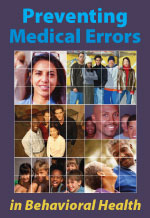The health effects of daylight saving time and how to mitigate them.
By Claire Penhorwood, CBC News
 It’s almost time for that annual ritual of turning the clocks forward, which means we will soon be enjoying an extra hour of daylight at the end of the day. But along with the hour of daylight we gain this Sunday, the quarter of the world’s population who observe daylight saving time will also be losing an hour of sleep.
It’s almost time for that annual ritual of turning the clocks forward, which means we will soon be enjoying an extra hour of daylight at the end of the day. But along with the hour of daylight we gain this Sunday, the quarter of the world’s population who observe daylight saving time will also be losing an hour of sleep.
One hour might seem like a small change, but it has proven to have a larger effect on us than just being a little groggy come Monday morning.
Health Effects
Today, the original purpose of daylight saving time — maximizing the amount of light during waking hours —still holds true. But more studies are popping up suggesting that people who are already susceptible to certain health problems, such as high blood pressure and depression, will feel the effects even more when the clocks move forward.
A Swedish study published in the New England Journal of Medicine in 2008 found the risk of a heart attack increases in the days right after the daylight saving time change.
“The most likely explanation to our findings are disturbed sleep and disruption of biological rhythms,” the lead author of the study, Imre Janszky, told National Geographic in an interview last year.
Researchers and sleep specialists have in recent years warned that the pace of modern working life, especially in the West, has left the majority of people sleep deprived. In 2007, Till Roenneberg of Ludwig-Maximilians University in Munich tracked the sleeping patterns of Europeans to explore the effects of moving from daylight time to standard time.
The study found that while both late and early risers adjusted to the time switch in the fall, night owls had a particularly difficult time adjusting to the time shift in the spring.
Australian researcher Greg Roach of the University of South Australia’s Centre for Sleep Research, who studies the body’s internal clock, said the study was commendable, even if it did confirm what many of us already knew.
“Until now, most of the impact of daylight saving time has been anecdotal,” Roach told the Australian Broadcasting Corporation. “One of science’s aims is to find evidence for things that seem common sense.”
Shyam Subramanian, a pulmonologist at Baylor College of Medicine and medical director of the sleep lab at Ben Taub General Hospital in Houston, spoke to the Houston Chronicle in 2010 about the effect of daylight savings on sleep patterns. Like Roenneberg, Subramanian’s research led him to conclude that most people in the West are already sleep deprived and are more affected than they realize by the time change.
“Losing an hour of sleep contributes to sleep debt,” he told the Chronicle. “If you don’t make up the debt, it manifests in waking up tired, needing a lot of caffeine to get going, nodding off during the day.”
The underlying lack of sleep and the adjustments people have to make to their schedules during daylight savings can also cause more accidents, Subramanian said.
“There is a higher incidence of workplace and occupational accidents, particularly in industries like mining and transportation, for about two to three weeks right around this time,” he told the paper.
Necessity or Nuisance
Scientists aren’t the only ones warning about the effects of daylight saving on health and behaviour. The Insurance Bureau of Canada doesn’t keep data on the number of accidents associated with the time change but uses the clock adjustment to remind people to be more cautious and pay greater attention to safety.
“From a property and casualty standpoint, [daylight saving is] a reminder for people to be awake, be aware and be safe on the roads,” said bureau spokesperson Steve Kee.
The bureau suggests people use the ritual of adjusting their clocks to remind themselves to also check around their home for possible safety risks, Kee said people can take that time to replace batteries in smoke and carbon monoxide detectors, put together an emergency supply kit and check homes for hazardous materials.
There are those who believe that the health and public safety risks associated with daylight time changes are significant enough to make changing the clocks twice a year more trouble than it’s worth.
Groups around the world have been lobbying governments to get rid of seasonal time changes altogether.
In Canada, areas of Quebec east of 63 degrees west longitude do not change to daylight time and remain on Atlantic standard time year round. Pockets of Ontario and British Columbia do not use daylight time.
Most of Saskatchewan has not observed daylight time since 1966 and stays on central standard time all year-round, with the exception of some border towns that follow the same time as their neighbours in Manitoba or Alberta.
Daylight time is observed in most of the United States. Just two states, Arizona and Hawaii, and three territories, American Samoa, Puerto Rico and the U.S. Virgin Islands, do not participate.
Some groups are pushing for daylight saving to be implemented all year long. A campaign called Lighter Later in the U.K., for example, has suggested that clocks be put forward an hour permanently. That way, come springtime, clocks will essentially be put ahead two hours, resulting in two extra hours of daylight in the evening.
The extra two hours of light for half of the year would mean a significant reduction in electricity use and approximately 300 more hours of daylight a year, according to Mayer Hillman, a Lighter Later advocate.
The campaign has strong support from road safety groups, the tourism industry and certain special interest groups representing children and teens, women, pensioners and people living in rural communities, Hillman said.
The group’s proposal was brought forward in the British Parliament earlier this year as the Daylight Saving Bill but has since been tabled.
The growing debate on the relevance of daylight saving will no doubt continue, but for now, most of us will turn our clocks forward this Sunday at 2 a.m.
Source: http://www.cbc.ca/news/canada/calgary/story/2012/03/08/f-daylight-saving-time-spring.html
Like this:
Like Loading...










 The history of Valentine’s Day–and the story of its patron saint–is shrouded in mystery. We do know that February has long been celebrated as a month of romance, and that St. Valentine’s Day, as we know it today, contains vestiges of both Christian and ancient Roman tradition. But who was Saint Valentine, and how did he become associated with this ancient rite?
The history of Valentine’s Day–and the story of its patron saint–is shrouded in mystery. We do know that February has long been celebrated as a month of romance, and that St. Valentine’s Day, as we know it today, contains vestiges of both Christian and ancient Roman tradition. But who was Saint Valentine, and how did he become associated with this ancient rite? In addition to the
In addition to the